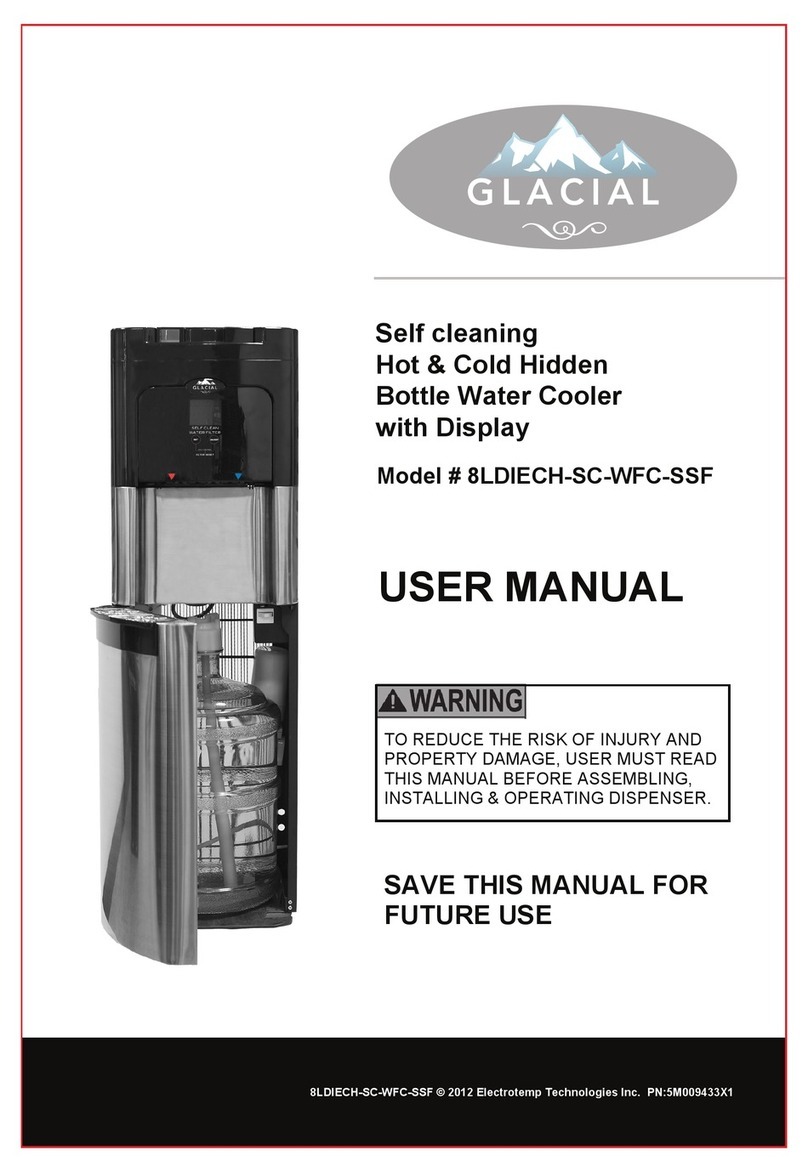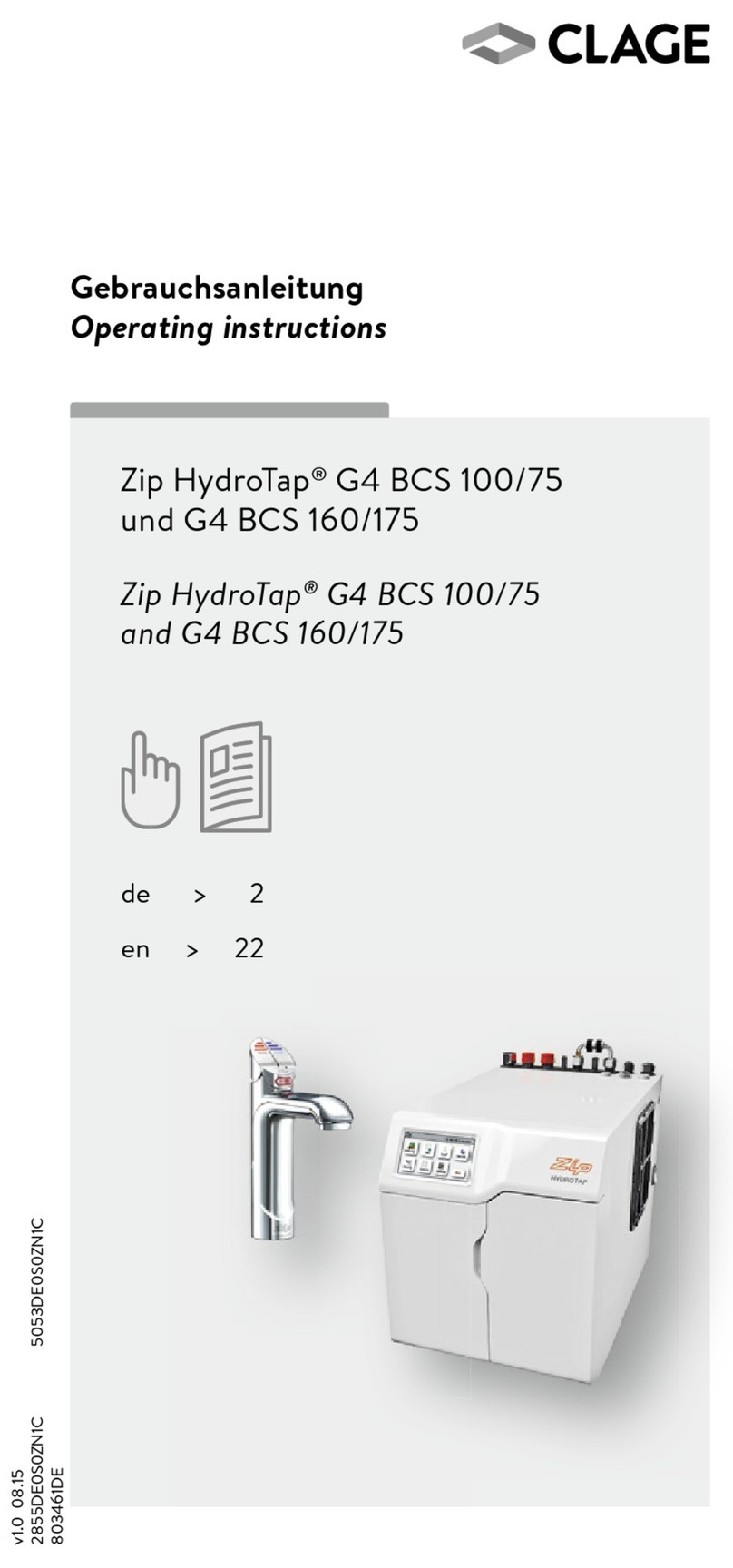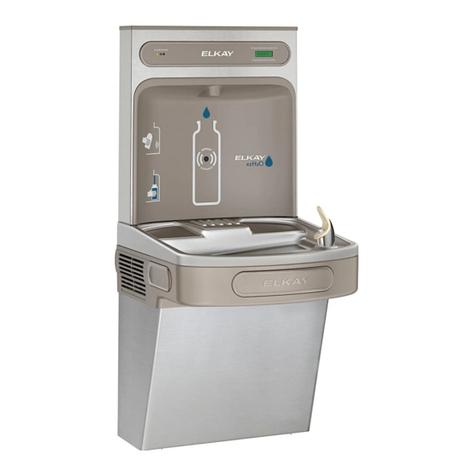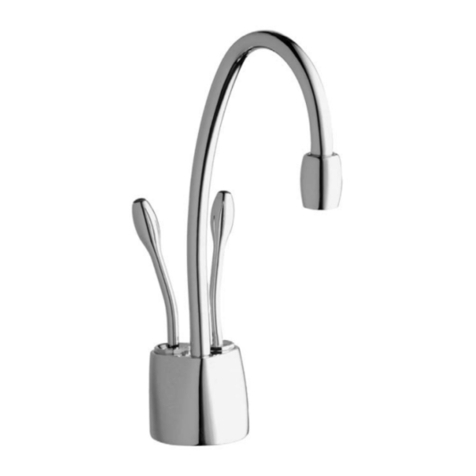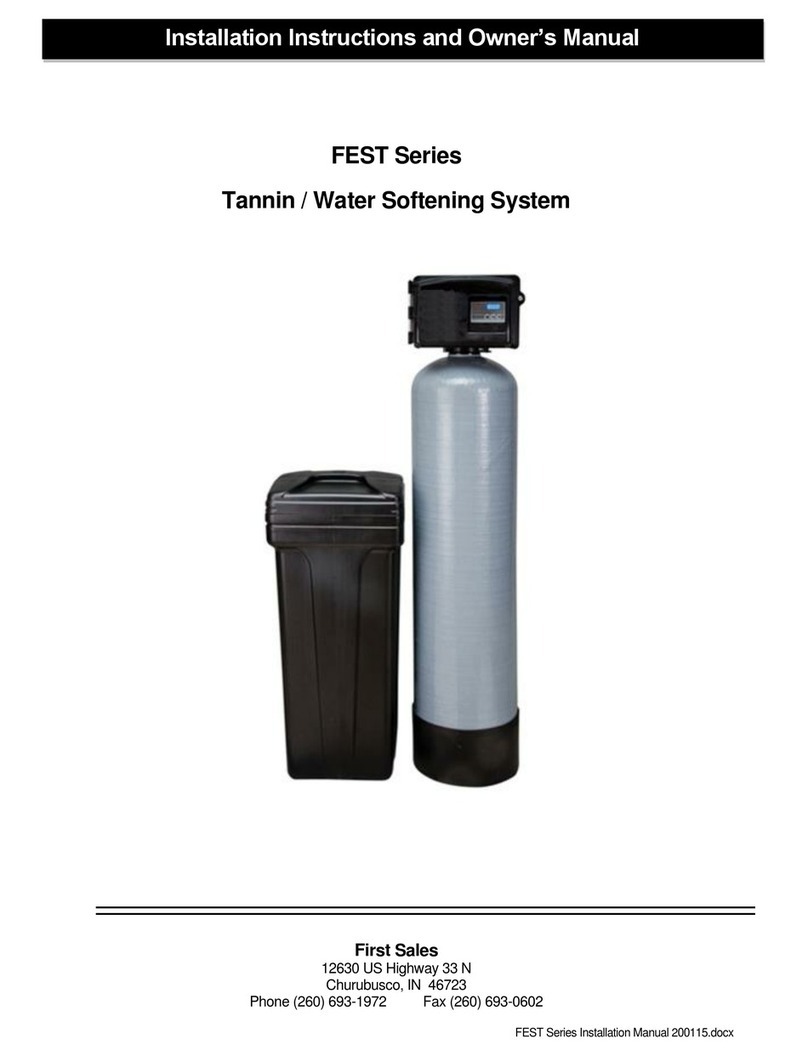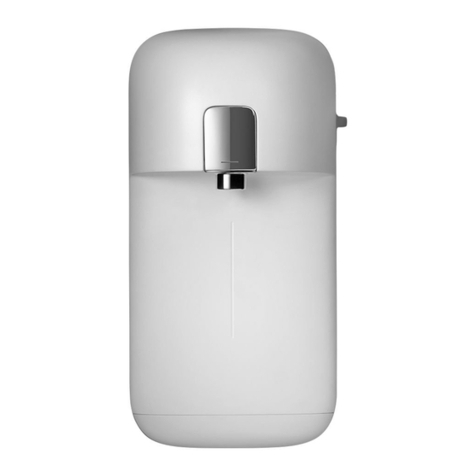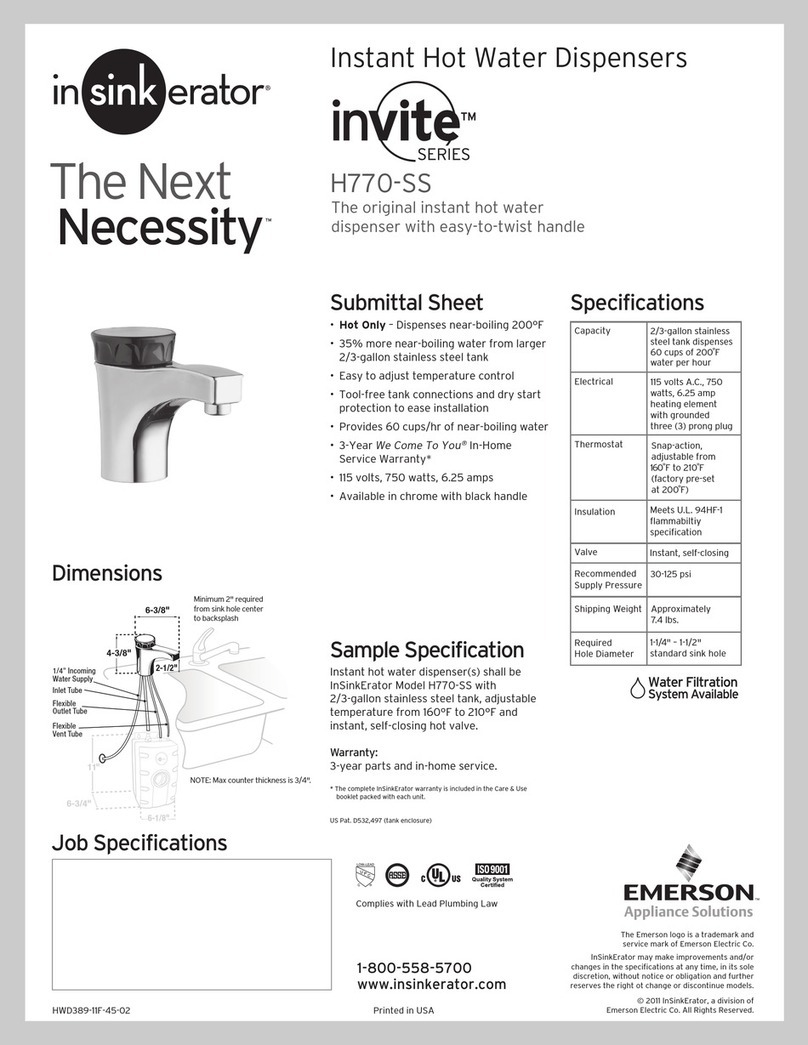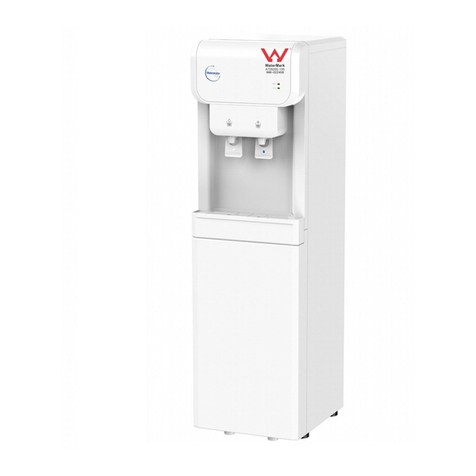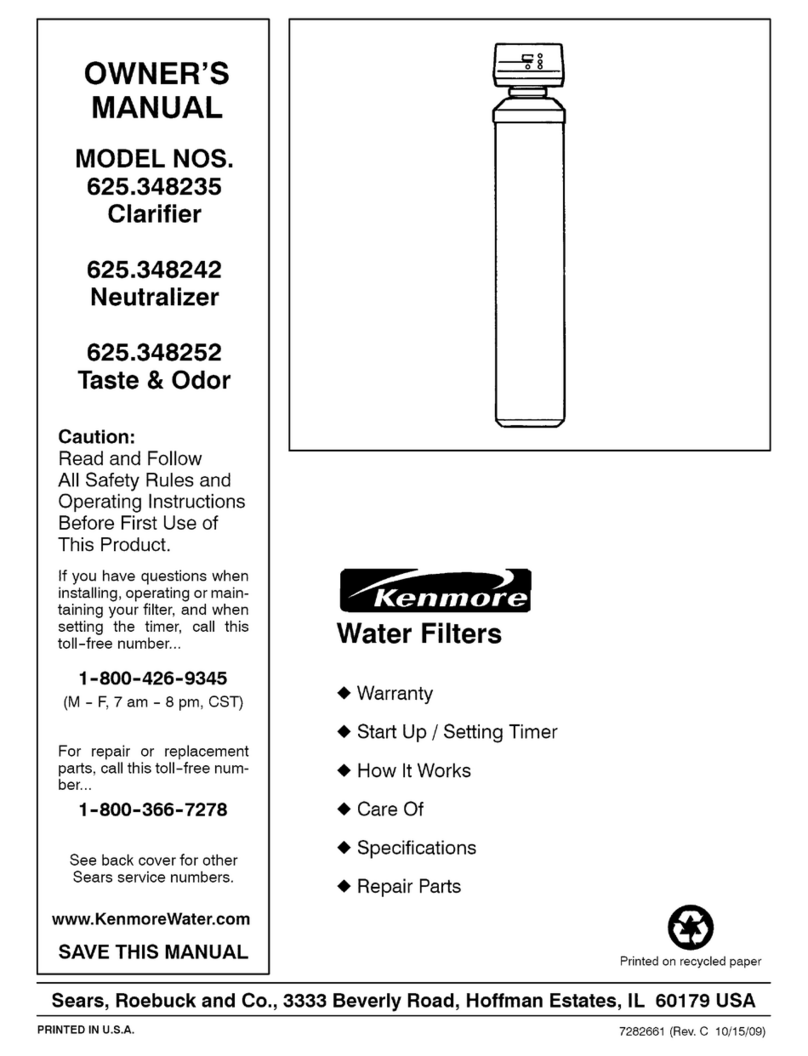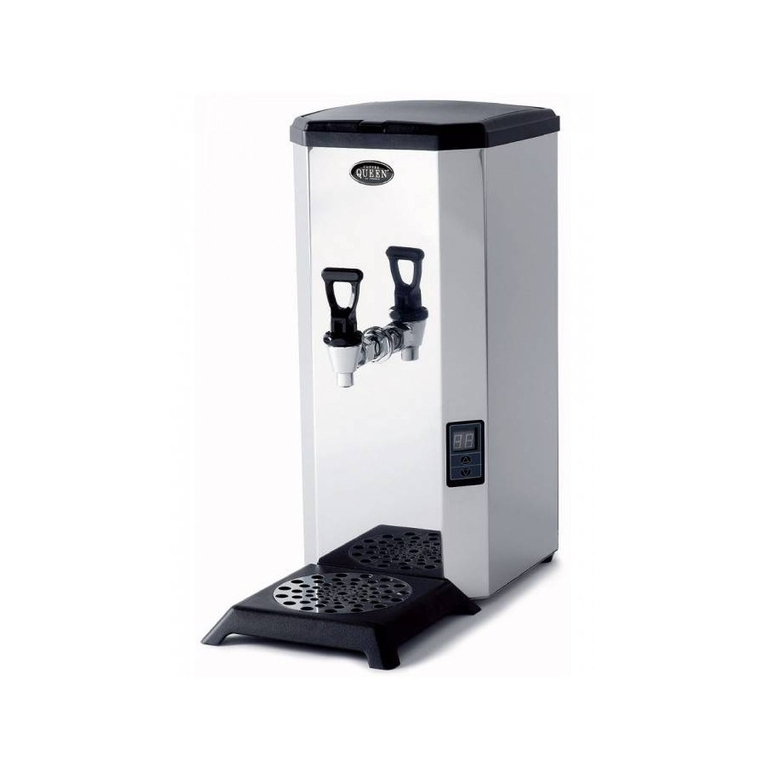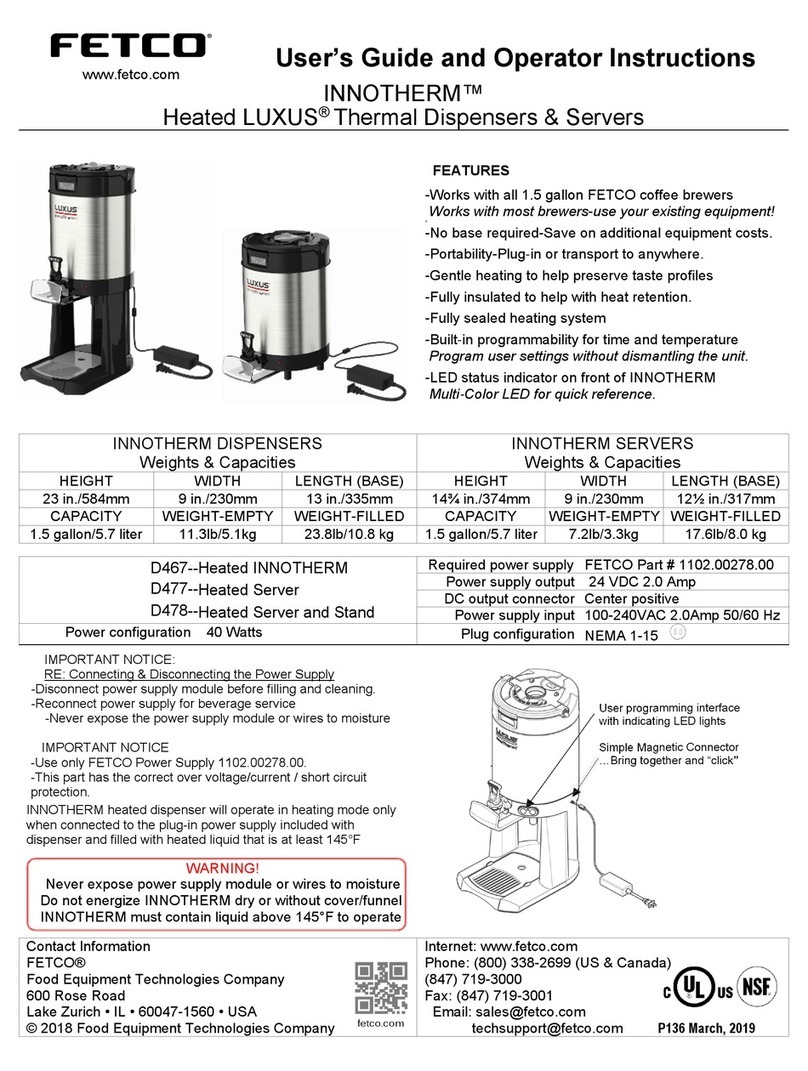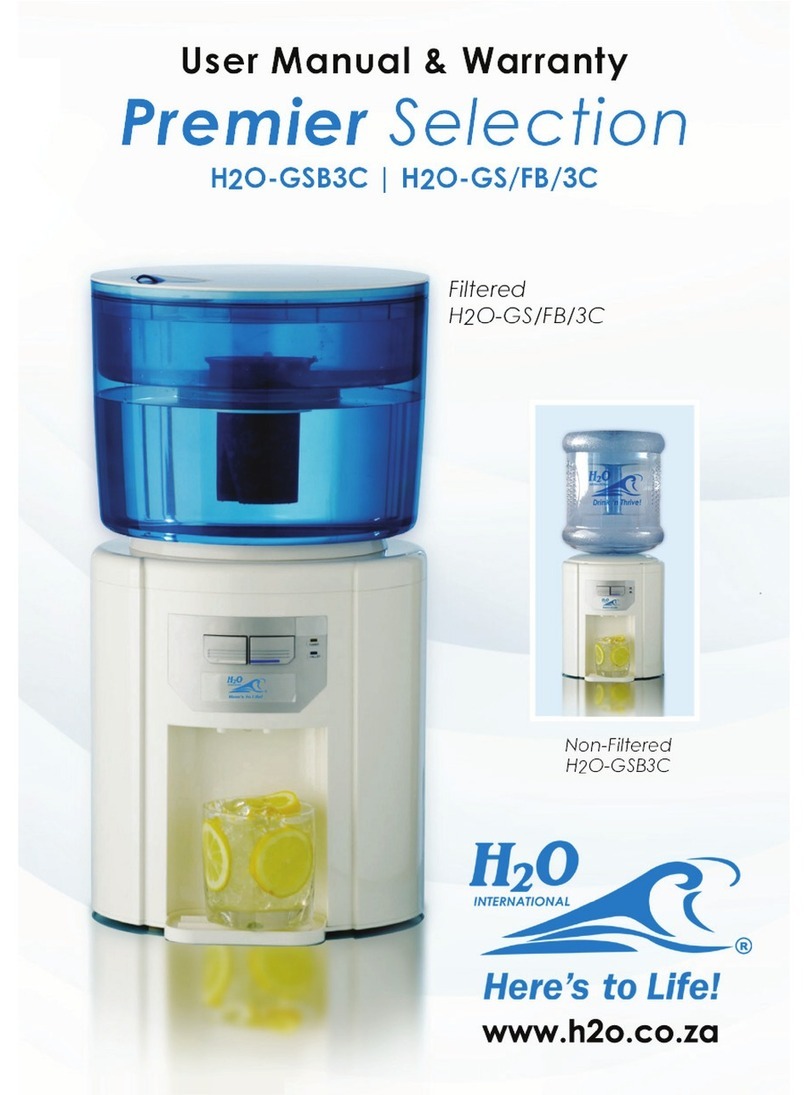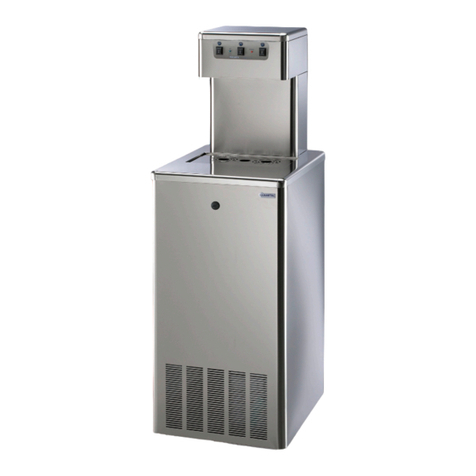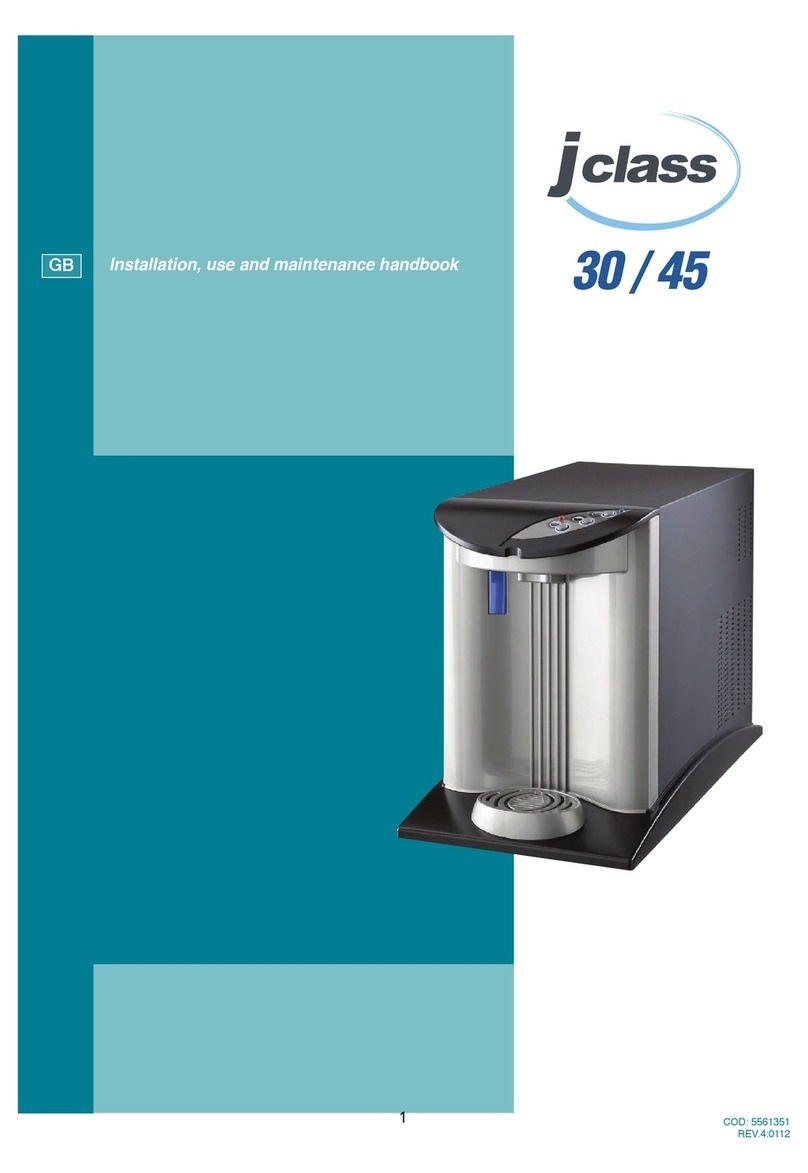
9.2
COOLING SYSTEM
GB
ANOMALY POSSIBLE CAUSE INTERVENTION
Ithe compressor will
not start
- power failure - check that there is voltage in the plug
- thermostat on the off position, or set to the mi-
nimum
-
adjust the thermostat position
- faulty thermostat - replace the thermosta
t
- the over-load protection of the compressor is faulty
- replace it
- the starting relay is faulty
- replace it
- the starting capacitor is faulty
- replace it
- the compressor is faulty
- replace it
the water is cold but
the appliance is ope-
rating excessively or
non-stop
- little ventilation
- place the appliance away from the wall
-
the condenser is dirty or covered
- clean the condenser or free it of its obstacles
-
the thermostat is on maximum cold position
- adjust it
-
the room temperature is higher than 32°C
- it is normal that the appliance works at a continuously high room tempe-
rature
the compressor
works continuously,
but the water is not
cold
- gas leak from the cooling system - contact a specialised technician (refrigerationist)
- the compressor is faulty
- replace the compressor
COOLING SYSTEM
too much noise com-
ing from the appli-
ance, but it is work-
ing normally
- the machine is not levelled
- level the appliance using the adjustable feet
- a few pipes are touching some parts inside the ap-
pliance, thus causing it to vibrate
- adjust the position of the pipes, making sure they do not touch any other
parts
l’acqua fredda esce
piano o non esce
- low pressure of the inlet water
- take steps to increase the pressure (autoclave)
- faulty solenoid valve
- replace it
- cloggedwaterlter
- replace it
- the temperature adjuster is faulty and causes
complete freezing of the ice compartment
- make the ice melt.
replace the temperature adjuster
CARBONATING SYSTEM
the carbonated wa-
ter is not very fizzy
or not at all
- the pressure of the gas in the co2 reducer is set
to less than 3 bars
- increaseupto3.5–4bars
- co2 cylinder empty - replace it
- the temperature of the outlet water is high - adjust the position of the thermostat to maximum
- air bubbles inside the carbonator - clean out the carbonator
only gas comes out
of the carbonated
water outlet
- the level probes are dirty - control and replace
- the pump turns continuously - nowaterisenteringorthewaterlterisblocked
- the pump turns continuously, inlet water is pre-
sent
- thepipettingintothecarbonatorisobstructed.disassembleandcle-
an
- the pump is blocked or the pump-motor is not
working
- check it and replace it
- the level controller is faulty - control and replace
- the pump safety device has intervened (no wa-
ter)
-
check that there is pressure in the network
disconnect and reconnect the machine from the electrical network to reset it
continuous dripping
from the outlets
- dirty solenoid valve - disassmeble the solenoid valve and clean it
the still water comes
out carbonated
- there is a shortage of inlet water - disassemble and clean or replace




















